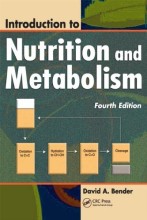Psychobiology of Food Choice and Eating Behaviour - Food choice across the life span
10 important questions on Psychobiology of Food Choice and Eating Behaviour - Food choice across the life span
How is the food choice/preference structured in children?
- Innate preferences/aversions - sweet/bitter
- rest is learned:
- mere exposure
- flavour nutrient learning
- flavour flavour learning
- social modelling - parental style
Childhood: flavour flavour learning
Toddlers increased intake vegetable crisps (5 -> 15 gram) independent of flavour sauce -> mere exposure
- effect stays in time (2 months) intake and liking
- effect stays in time (2 months) intake and liking
How is the food choice structured in adolescents?
- Rapid physical growth - accelerated rate of increase in height/weight during puberty
- dramatic hormonal changes
- major changes in cognitive proceses and related brain function
- major changes in social roles, relationships and vocational roles
- preferences/dietary habits -> pretty stable
- need for increased energy intake
- determinants of adolescent's food choices:
- physical -> hormones, growth, brain maturation
- social -> peer acceptance, autonomy
- gender differences
- Higher grades + faster learning
- Never study anything twice
- 100% sure, 100% understanding
Adolescence: what are the physical determinants of food choice?
Rapid physical growth -> increased energy intake + balanced diet is important
Adolescents have good knowledge about healthy eating practices but do not act on this.
Most important: taste, hunger, price
Less important: health, nutrition, long-term
Adolescents have good knowledge about healthy eating practices but do not act on this.
Most important: taste, hunger, price
Less important: health, nutrition, long-term
Adolescents: what are the social determinants of food choice?
Growing independence + autonomy
Social + purchasing power is higher
Need for peer acceptance is higher![]()
Social + purchasing power is higher
Need for peer acceptance is higher
What are the determinants of food choice during mid-life?
Processes within family that influence food choices of adult members:
- family dynamics over time:
- periods of readjustment of food choice patterns:
- family formation- initial years of marriage
- entry of children into the family
- middle-age- health issues
- gender + gender roles:
- women- household food provider
- social stratification- division of household tasks, in particular food chores
- power in families + decision making:
- Interaction between couples on how they divide responsibilities and what is eaten
Food choices later in life:
...
Later in life: increasing age > impaired sensitivity
- > 50 studies since 1950: many convincing data
- thresholds, suprathreshold sensitivity, identification ability
- decline in smell > decline in taste
- elderly, a heterogeneous group!
Later in life: increasing age > higher optimal flavour concentrations/changes in preferences
- About 30 studies
- several studies confirm this, not all!
- not unanimous: different for different groups of elderly
- different for various flavours
- slightly higher optimal flavour (taste+odor) concentrations in elderly compared to young subjects
- ----- young
- - - - - elderly
Later in life: higher tastant/flavour concentrations > higher food intake
- 10-15 studies
- evidence becomes weaker
- various studies confirm hig
her intake with higher sensory stimulation, but some do not
Ad libitum intake of apple juice with different sugar concentrations in 33 young and 35 elderly subjects
Try our study magic for free
a PDF, study it super fast
- No sign up, email or credit card needed!
- AI makes unlimited flashcards
- Get unlimited quizzes and tests
- Ask AI anything
Create a notebook
- No sign up, email or credit card needed!
- Have and keep perfect overview
- Make flashcards, notes and mind maps
- Review, test and score!
The question on the page originate from the summary of the following study material:
- A unique study and practice tool
- Never study anything twice again
- Get the grades you hope for
- 100% sure, 100% understanding
Remember faster, study better. Scientifically proven.





























